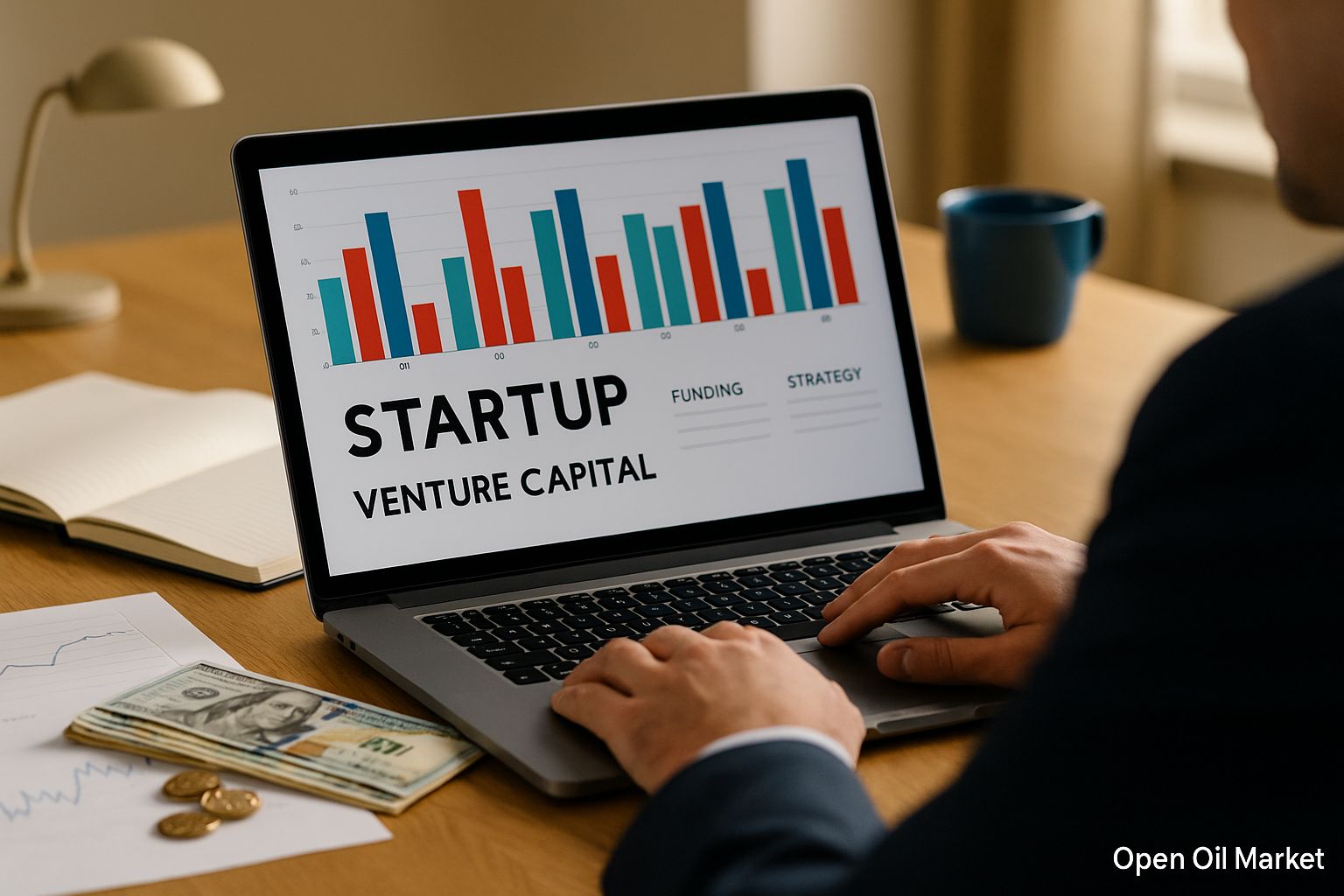
Global Startup and Venture Capital News as of 20 October 2025: The Return of Mega Funds, Record AI Rounds, Revitalisation of IPOs, and Trends in the Global Venture Market.
By mid-October 2025, the global venture market continues to recover confidently following a prolonged downturn in recent years. Investors worldwide are once again actively financing technology startups, resulting in record-breaking deals and renewed focus on companies' plans for initial public offerings (IPOs). Major players are returning to the arena with substantial investments, while governments around the world are enhancing support for innovation. Consequently, private capital is gradually re-entering the startup ecosystem, providing resources for new growth.
Growth in venture activity is observed across all regions. The US remains firmly in the lead (especially in the field of artificial intelligence), while investment volumes in startups are rapidly increasing in the Middle East, and Germany has overtaken the UK in terms of venture deals for the first time. India, Southeast Asia, and Gulf countries are attracting record levels of capital amidst a slowdown in activity within China. The startup ecosystems in Russia and the CIS are also striving to keep pace despite external constraints. Thus, a global venture boom is gaining momentum, though investors are still acting selectively and cautiously.
Below are the key events and trends shaping the venture market landscape as of 20 October 2025:
- The return of mega funds and large investors. Leading venture funds are attracting unprecedented volumes of capital and sharply increasing investments, saturating the market with liquidity and fuelling risk appetite.
- Record fundraising in AI and a new wave of unicorns. Unprecedentedly sized funding rounds are skyrocketing startup valuations to unseen heights, particularly in the artificial intelligence segment, giving rise to new unicorns.
- Revitalisation of the IPO market. Successful public listings of several technology companies and new applications confirm that the long-awaited 'window' for exits remains open.
- Diversification of sectoral focus. Venture investments are being directed not only towards AI but also into fintech, climate and environmental projects, biotechnology, defence technology, and even crypto startups.
- A wave of consolidation and M&A deals. New significant mergers, acquisitions, and strategic investments are reshaping the industry landscape, creating opportunities for exits and accelerated growth.
- Local focus: Russia and the CIS. Despite constraints, new funds and initiatives are being launched in the region to develop local startup ecosystems, drawing the attention of investors.
The Return of Mega Funds: Big Money Back on the Market
The largest investment players are triumphant in their return to the venture scene, signalling a renewed appetite for risk. For instance, the American firm Andreessen Horowitz has announced the formation of a mega fund worth approximately $20 billion aimed at investing in AI startups, while the Japanese conglomerate SoftBank is launching Vision Fund III, estimated at around $40 billion, focused on advanced technologies (including AI and robotics). Sovereign funds from Gulf countries have also dramatically ramped up activity, pouring billions into technology projects and developing state mega-programmes, creating their own tech hubs in the Middle East. Simultaneously, a multitude of new venture funds are being established worldwide, attracting significant institutional capital for investments in high-tech sectors.
Renowned Silicon Valley firms are also expanding their presence. In the American venture sector, funds have accumulated unprecedented reserves of uninvested capital ("dry powder")—hundreds of billions of dollars—ready to be deployed as market confidence returns. This influx of "big money" fills the startup market with liquidity, providing the resources for new funding rounds and supporting the growth of valuations for promising companies. The return of mega funds and large institutional investors not only intensifies competition for the best deals but also instils confidence in the industry regarding continued capital inflow.
Record Investments in AI and a New Wave of Unicorns
The artificial intelligence sector is the primary driver of the current venture boom, displaying record levels of financing. Investors globally are eager to invest in AI startups, leading to unprecedented mega-rounds. Just in the last quarter, the company Anthropic raised approximately $13 billion in investments, Elon Musk's project xAI secured over $5 billion, and AI model developer OpenAI organised a fundraising round worth $40 billion (valuing the company at roughly $300 billion)—scales previously unseen in the industry. As a result, almost half of all venture capital in 2025 is directed towards the AI sector.
The high influx of funds drives up valuations for young companies: AI startups frequently attain "unicorn" status (valuations exceeding $1 billion) at record speed. A new wave of highly valued companies has emerged in the market, particularly in the generative AI and AI infrastructure segments. Although several major investors are already warning of signs of a "hype bubble" at early stages (where any project labelled as AI is assigned excessive multiples), the fear of missing the next revolution fuels further capital inflow. Consequently, the AI sector is experiencing an unprecedented boom, shaping generations of new technological leaders—provided they can validate their business models with tangible results.
The IPO Market Revives: An Open Window for Exits
The global market for public listings of startups is emerging from a lull and gaining momentum. In recent months, several notable venture companies have successfully conducted IPOs, receiving strong valuations on the stock market. Investors are once again willing to purchase shares of tech newcomers, evidenced by impressive debuts: for instance, design developer Figma and fintech giant Circle entered the market with tremendous success, with their stock surging hundreds of percent in the first days of trading. In 2025, the total number of IPOs increased compared to the previous year, and more than a dozen "unicorn" startups went public in the third quarter, with a total capitalization exceeding $90 billion at debut.
Venture investors view these signals as confirmation that the long-awaited "liquidity window" for exits is indeed open. Companies that postponed their IPOs during the market downturn are now renewing plans and submitting applications to regulatory authorities. Among the anticipated major IPOs are Swedish fintech decacorn Klarna, poised to list with a valuation of around $14 billion, along with several other unicorns globally. The successes of new listings not only allow founders and investors to realise profits but also restore confidence that the venture cycle can conclude with planned exits. The window of opportunity for investment exits has reopened, facilitating capital reallocation to new projects.
Diversification of Investments: Beyond AI
In 2025, venture investments are covering an increasingly broader range of sectors and are no longer solely concentrated on artificial intelligence. Following last year's downturn, financing in other segments of the tech market is reviving, making the current growth more balanced. Funds are striving to diversify their portfolios by allocating capital to promising projects across various fields. Key areas attracting investor attention include:
- Fintech — new financial technology services and digital banks continue to attract capital amid demand for online services.
- Climate and environmental projects — solutions in clean energy, carbon emissions reduction, and sustainable technologies receive support due to the prioritisation of sustainability (ESG).
- Biotechnology — investments in medicine and pharmaceuticals remain substantial, especially in the development of new drugs, genetic research, and longevity technologies.
- Defence and aerospace developments — startups in security, military technology, and space are gaining attention amid rising government contracts and geopolitical challenges.
- Crypto startups — following a decline in interest in previous years, projects in the cryptocurrency and blockchain sphere have re-emerged on the radar of venture investors, partly due to the stabilisation of the digital asset market.
Thus, venture capital is being directed towards diverse sectors—from finance and health to climate and defence technologies. The strategy of broadening sectoral focus aims to mitigate risks of overheating in one segment (such as AI) and ensure a more sustainable development of the entire startup market.
Consolidation and M&A Deals: Growing Key Players
High valuations for startups and intense competition for markets are driving the industry towards consolidation. A wave of significant mergers and acquisitions is back in the spotlight, altering the power dynamics within the technology sector. In the third quarter of 2025, numerous notable M&A deals took place, including several unicorns being acquired by strategic investors. Companies seeking to acquire promising developments play a role, as do the tech unicorns themselves, which are merging to strengthen their positions. For example, one of the market leaders in AI—OpenAI—not only attracts record funding but also acquires small AI companies to enhance its capabilities; in the fintech segment, major players are acquiring startups to integrate new services, while in biotech, pharmaceutical giants actively absorb developers of promising drugs.
Consolidation reshapes the industry landscape by consolidating key players and enabling the most successful startups to scale more rapidly under the wings of larger companies. For venture funds, the M&A wave presents additional exit pathways for investments: strategic deals often become an alternative to IPOs, delivering much-awaited returns for investors. While the overall volume of buyout deals may vary quarterly, the trend towards business consolidation is clear—the technology sector has entered a phase where collaboration and acquisitions are becoming integral to growth strategy.
Russia and the CIS: Local Initiatives amidst Global Trends
In Russia and the CIS, despite external constraints, there is also a revival of venture activity. According to industry studies, in the first half of 2025, the volume of venture investments in Russia nearly doubled compared to the previous year (albeit from a low base), reaching tens of millions of dollars. At the same time, the total number of deals decreased, reflecting a new trend: there is more money available, but fewer projects, indicating that investors are betting only on the strongest teams. The average size of investments has risen, and the requirements for startups have tightened—passing through the selection process has become more challenging, but trusted projects attract significantly larger capital.
New funds and programmes aimed at supporting tech companies are being launched in the region. Government institutions and large corporations are increasingly participating in developing the local startup scene: industry accelerators, regional venture funds (such as the Moscow AI development fund, industry-specific funds within state corporations), and innovation clusters are being established. These initiatives aim to compensate for the outflow of foreign capital and integrate local projects into global trends. Despite sanctions, Russian and neighbouring ecosystems strive to keep up with global trends—from artificial intelligence to new industrial technologies. The local venture market is showing cautious growth and gradually rebuilding trust with investors willing to finance competitive startups within the country.
Cautious Optimism and Quality Growth
By mid-autumn 2025, the venture market demonstrates moderately optimistic sentiments: successful IPOs and significant deals indicate that the downturn period is behind, although investors continue to act selectively, favouring projects with sustainable business models. Large capital injections into the AI sector and other industries instil confidence, but funds are striving to diversify investments and rigorously control risks to prevent the new upswing from overheating. Ultimately, the industry is entering a new phase of development with a focus on quality, balanced growth. Market participants are cautiously optimistic: there is an understanding that the next wave of innovations could yield significant achievements, provided a prudent balance is maintained between ambitious investments and disciplined risk evaluation.




